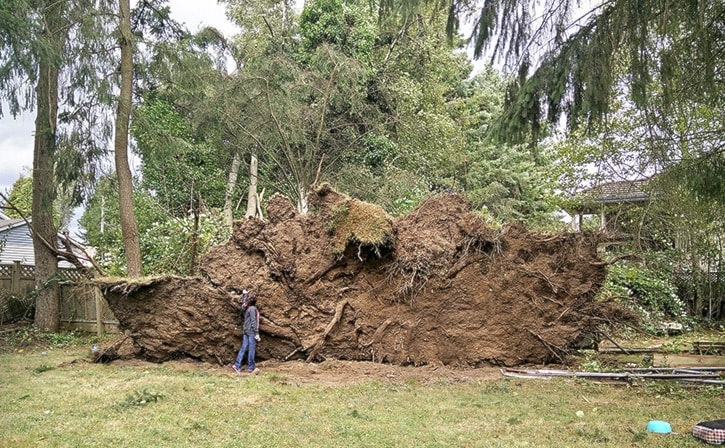Editor:
I have only recently moved to White Rock and was one of the hundreds of thousands of residents across the Lower Mainland without power from the windstorm.
Our power went out around noon Saturday, came on around 11 a.m. Sunday and, at 1 p.m., went out again.
I saw the tweets congratulating BC Hydro for getting the power on. Really? I am seriously concerned at BC Hydro’s readiness in the face of even bigger disaster.
Saturday’s windstorm, while powerful, was not nearly as bad as in other places I’ve lived, and I can’t remember in the last 16 years – other than the big eastern blackout of 2003 – where power was out more than an hour or two, let alone overnight.
Instead of congratulating BC Hydro, we should all be very concerned and be demanding how BC Hydro would respond to a real disaster such as an earthquake.
Meanwhile, I am definitely looking up generators. If this is all it takes to throw out the power now, I want something ready for a real storm!
Alison Prentice, White Rock
• • •
Welcome to another season of violent windstorms.
The first arrived this past weekend, three months ahead of schedule, but with results predictably the same: major property damage, fallen trees everywhere, hundreds of businesses closed and extensive and extended power failures – in our neighbourhood for about 60 hours
With the next storms this fall and winter, we can also expect school closures and discomfort to those infirm, elderly and reliant on electricity to start their furnace.
It doesn’t have to be this way. We can’t do much about inclement weather, but we can certainly do a much better job of preparing ourselves for its consequences.
Much of the problem, as we all know, is caused by fallen branches and toppled trees. Trees grow taller and older every year, but they don’t live forever. Newton’s law still applies, and what goes up must eventually come down.
Surrey’s solution to power line rights-of-way is to cut tunnels through the tree canopy. The fact that a ton or more of branches may be left above the power line, just waiting for the next storm, is of no consequence. For their part, property owners are advised that any tree over 12-inch diameter but located more than one meter from the foundation cannot be cut down, no matter its height.
In all this, Surrey city hall is contributing significantly to the problem as a result of its inane and inflexible tree bylaw. So here are a few suggestions:
• Allow BC Hydro to do the sensible thing and remove all tall native trees adjacent to local power lines and replace them with species more appropriate and less brittle.
• All tall native trees on rights-of-way adjacent to city streets should be replaced as above, the worst offenders being firs, cottonwoods, big leaf maples and alders.
• Give property owners a little slack and allow them to remove any tall tree they believe a danger to the safety of their loved ones and property. A recommended minimum safe distance from both house and incoming overhead power lines for a 30-meter tree might be perhaps 10 or 15 meters, but certainly more than three.
Chris Hodgson, Surrey
• • •
I had lots to think about during and after the storm on Saturday and the ensuing power outage.
Fortunately, the power went out during the day and made the task of locating the flashlight and radio easier for use later. My girls took this opportunity to announce an impromptu games night. Great since none of our eBooks and iPads were fully charged anyway.
After our cold pizza dinner, I ventured outside and almost every vehicle was emitting a white glow as a result of charging electronics. Obsessive compulsive behaviour?
As Sunday morning rolled around, we were still without power and decide to hit McDonald’s for coffee. What preceded to greet us was a long line that continued outside complete with shoving and shouting.
Day 1 after the storm… imagine Day 15 after the big one – a complete breakdown in society, civil disobedience. Images of a dystopian future came to mind, with hordes of gangs looting and preying on the weak. Too Hollywood? Maybe.
No one likes to dwell on the harsh realities of a real emergency, but are you really prepared? This is a wake-up call. Let’s plan for the worst and not just hope for the best.
Jas Purewal, Surrey
• • •
Re: The laugh was on us, Sept. 2 editorial.
I have been wanting to write Peace Arch News for some time, and after reading your editorial I had to respond.
I am a summer resident of Ocean Park and a U.S. citizen. I have been amazed ever since coming to the Lower Mainland how many power outages have occurred during my time here. Not only do they create dangerous situations, they are unnecessary.
The problem is not only acerbated by the overhead power and telephone lines, but the lines detract from the beauty of your province and are extremely dangerous if they are hanging freely. I remember in the early ’80s when my neighbourhood overhead lines in California were put underground; it took the power company just one day and a small hole in the ground to make our street a much lovelier and safer place to live.
I read almost every week about the removal of trees for development and the love of residents for their trees. Why then are so many trees used to hold telephone and power lines, when those trees can be saved for future uses, not polluting our streets and the beauty of the environment?
Michael B. Kolsky, Surrey
